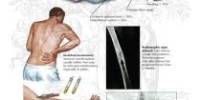For the first time, radiation, which is used to treat 50% of cancer patients, can be assessed while a patient is receiving treatment thanks to accurate 3D imaging created by the University of Michigan.
Medical experts may map the radiation dose throughout the body and use this new information to guide therapies in real time by catching and amplifying the minute sound waves that are produced when X-rays heat tissues in the body. It’s a first-of-its-kind view of an interaction doctors have previously been unable to “see.”
“Once you start delivering radiation, the body is pretty much a black box,” said Xueding Wang, the Jonathan Rubin Collegiate Professor of Biomedical Engineering, professor of radiology and corresponding author of the study in Nature Biotechnology. He also leads U-M’s Optical Imaging Laboratory.
“We don’t know exactly where the X-rays are hitting inside the body, and we don’t know how much radiation we’re delivering to the target. And each body is different, so making predictions for both aspects is tricky.”
Each year, hundreds of thousands of cancer patients receive radiation therapy, which involves hitting a specific area of the body with high energy waves and particles, typically X-rays. Radiation has the ability to completely destroy cancer cells or harm them so they can’t proliferate.
Radiation treatment frequently kills and destroys healthy cells in the regions around a tumor, undermining their advantages. It can also raise the risk of developing new cancers.
Real-time 3D imaging allows medical professionals to more precisely target radiation treatment at malignant cells while limiting exposure to other tissues. To do that, they simply need to “listen.”
In future applications, this technology can be used to personalize and adapt each radiation treatment to assure normal tissues are kept to a safe dose and that the tumor receives the dose intended. This technology would be especially beneficial in situations where the target is adjacent to radiation sensitive organs such as the small bowel or stomach.
Professor Kyle Cuneo
When X-rays are absorbed by tissues in the body, they are turned into thermal energy. That heating causes the tissue to expand rapidly, and that expansion creates a sound wave.
The acoustic wave is weak and usually undetectable by typical ultrasound technology. With a number of ultrasonic transducers positioned on the patient’s side, the new ionizing radiation acoustic imaging system from U-M locates the wave. For the purpose of reconstructing an image, the signal is amplified and then sent to an ultrasound machine.
An oncology clinic can change the radiation dose or path throughout the procedure with the images at hand, resulting in safer and more efficient treatments.
“In the future, we could use the imaging information to compensate for uncertainties that arise from positioning, organ motion and anatomical variation during radiation therapy,” said Wei Zhang, a research investigator in biomedical engineering and the study’s first author. “That would allow us to deliver the dose to the cancer tumor with pinpoint accuracy.”
Another advantage of U-M’s technology is that it can be quickly added to existing radiation therapy equipment without significantly altering the routine operations utilized by practitioners.
“In future applications, this technology can be used to personalize and adapt each radiation treatment to assure normal tissues are kept to a safe dose and that the tumor receives the dose intended,” said Kyle Cuneo, associate professor of radiation oncology at Michigan Medicine. “This technology would be especially beneficial in situations where the target is adjacent to radiation sensitive organs such as the small bowel or stomach.”
The research team is led by U-M, including Wang, Cuneo and Issam El Naqa, adjunct professor of radiation oncology at the U-M Medical School. The team works with partners at the Moffitt Cancer Center.
The University of Michigan has applied for patent protection and is seeking partners to help bring the technology to market. The National Cancer Institute and the Michigan Institute supported the research for Clinical and Health Research.








![Report on L/C Tracking System of HSBC [part-2]](https://assignmentpoint.com/wp-content/uploads/2013/03/hsbc1-110x55.jpg)






